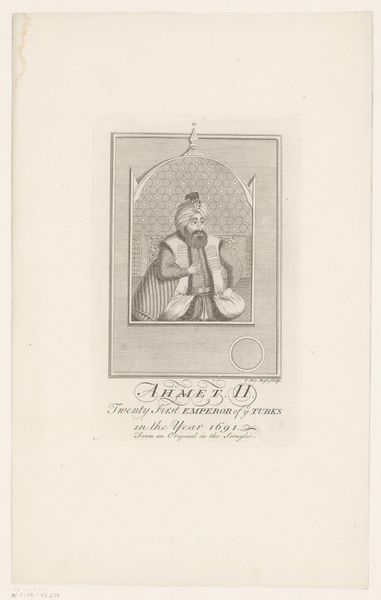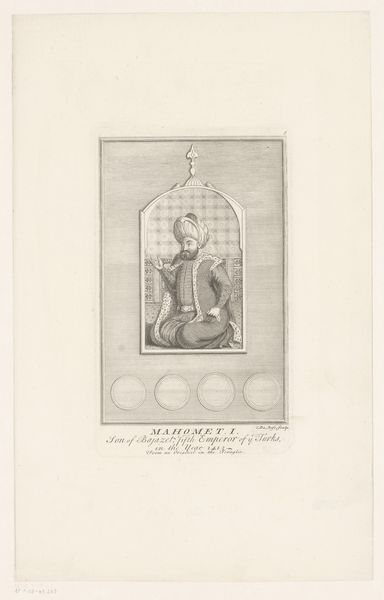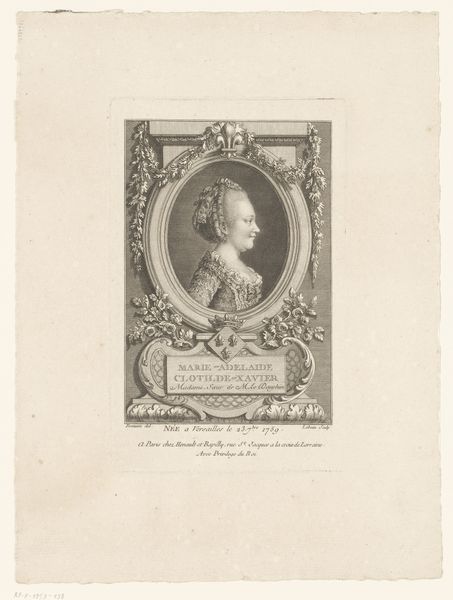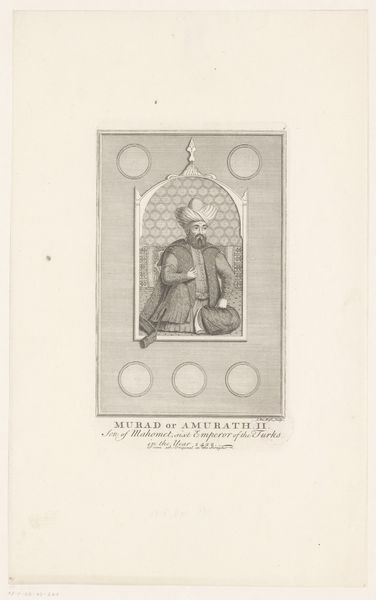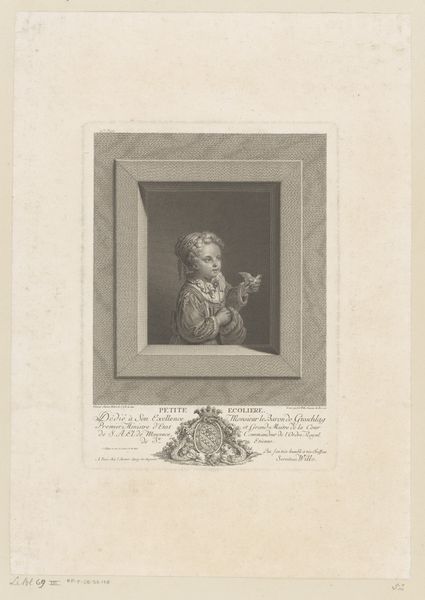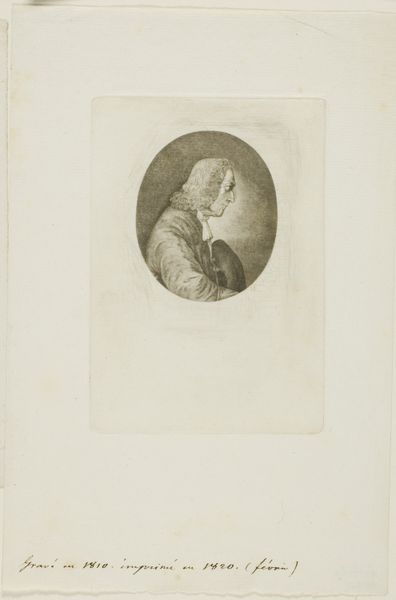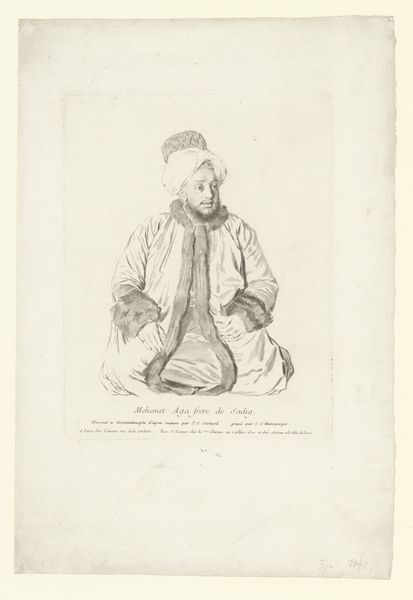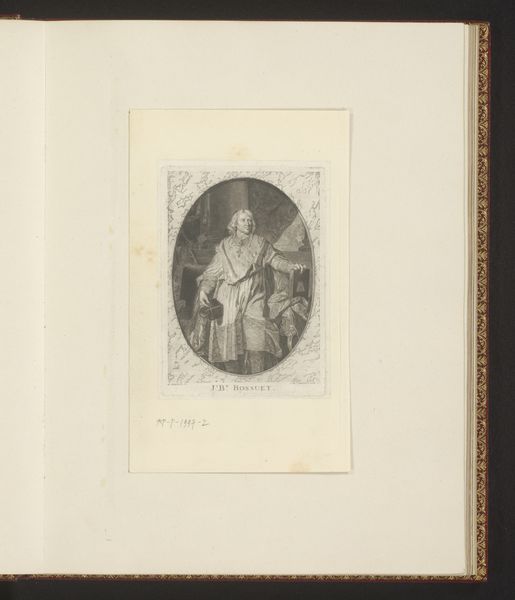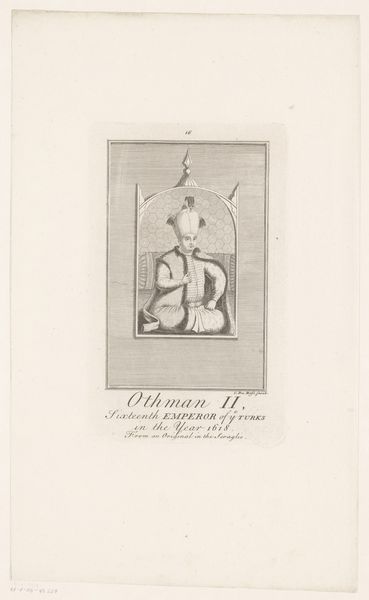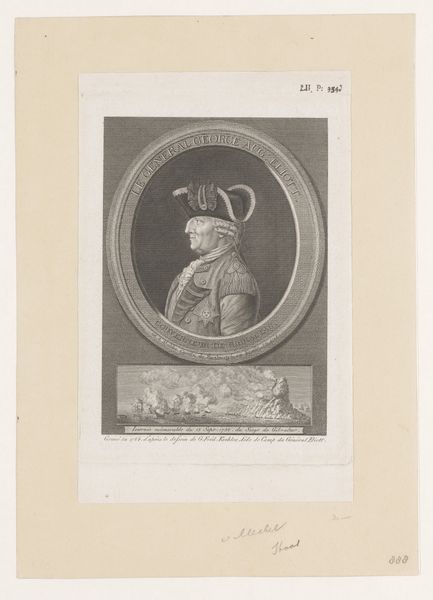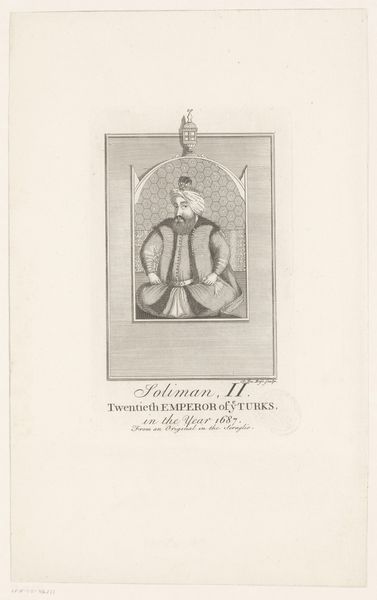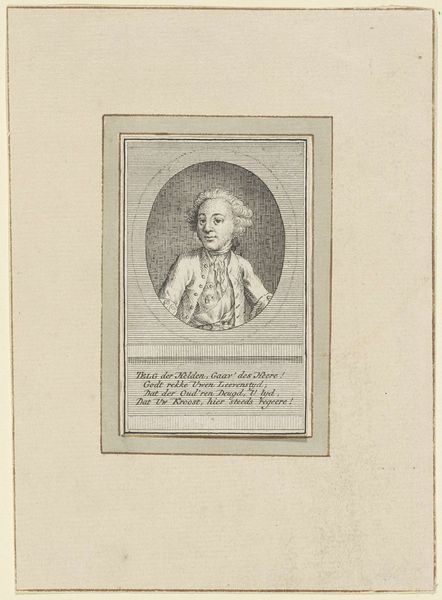
print, engraving
#
portrait
#
baroque
# print
#
islamic-art
#
history-painting
#
engraving
Dimensions: height 196 mm, width 122 mm
Copyright: Rijks Museum: Open Domain
This is a print, made by Claude DuBosc around the late 17th to mid 18th century. It’s an engraving, which is a printmaking process that involves cutting a design into a flat surface, in this case a copper plate, using a tool called a burin. The fine lines we see were painstakingly incised and then filled with ink to transfer the image to paper. This wasn't just about replicating an image; it was about disseminating knowledge. In a pre-photographic era, prints like these played a crucial role in circulating portraits of important historical figures such as Selim I, the ninth Emperor of the Turks. Consider the labor involved: the steady hand of the engraver, the precision required to capture the likeness and details of Selim's attire. Printmaking was not only a skilled craft but also a business. Understanding the process allows us to see the print not just as an image, but as a product of a specific time, place, and set of social and economic conditions.
Comments
No comments
Be the first to comment and join the conversation on the ultimate creative platform.
